Under the Sun
In almost every medium, too much sunlight can ruin an art piece, but what would happen if it was a part of the process itself?
Most art is made from the comfort of an indoor studio or covered enclave, away from the damaging heat and light produced by sunlight. If hit by its rays for too long, many mediums including oil, acrylic, clay and pastel will often show damaging effects through fading color and cracking textures.
However, there is one artistic method that uses these effects to its advantage. Sun printing, otherwise known as Cyanotype, is a 170-year-old camera-free printing process that utilizes UV rays and negative space to transfer photos onto fabrics and papers.
How-To Guide:
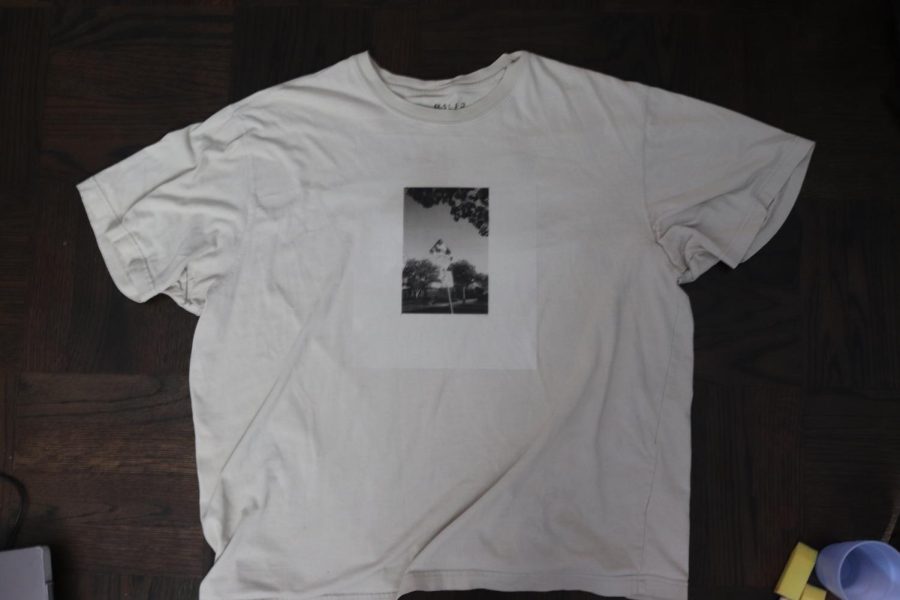
Print out your chosen image onto a transparency sheet to creative a negative, and place it on chosen paper or fabric.

Trace the section you wish to color with a pencil, then spread cyanotype on the stenciled area with a sponge brush in a dark room.* Make sure to place a C-Magazine in between the layers of the shirt so the cyanotype doesn’t seep through, and wait until the material is slightly damp to the touch before progressing to Step 3.
*Ensure no sunlight enters the room suring Step 2, or else the cyanotype will start activating too early!

Place the negative overtop the cyanotype and leave in direct sunlight for 10-20 minutes.
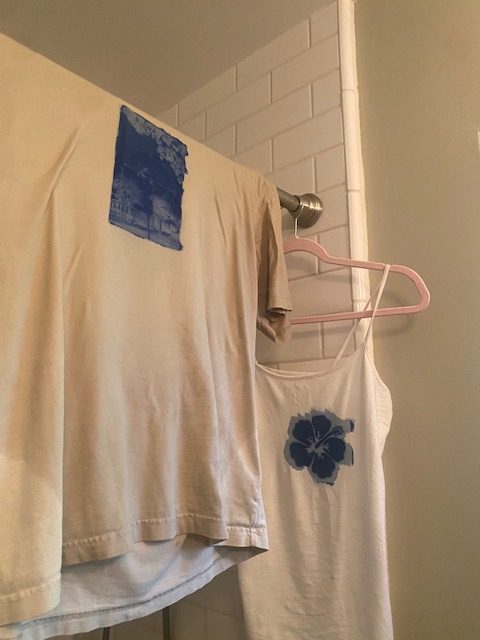
Rinse fabric to rid it of chemicals, then allow your piece to hang dry overnight in a dark room.

In the morning, your Cyanotype project will be ready to wear!
As spring and summer approach, the art style has gained newfound popularity due to its vibrant colors and seasonal dependency on sunny weather.
Paly junior Alice Brandenburg enjoys the more practical aspects of the medium, and how financially accessible the art style can be.
“If you see a cool design and you really like it, you can implement it into a piece of clothing that you make, and it’s a lot easier [than buying].” Brandenburg said. “It does take some time, but it’s a fun experience and you save money.¨
With materials totaling just under 20 dollars, Brandenburg and her friends were able to print on over ten articles of clothing, proving the economic benefits.
As a process, Cyanotype can also be more liberating than other artistic methods. Paly junior Renny Argast had the opportunity to experiment with the process at a pre-college program she attended last summer at the Rhode Island School of Design.
Accordion title 1
This is a placeholder tab content. It is important to have the necessary information in the block, but at this stage, it is just a placeholder to help you visualise how the content is displayed. Feel free to edit this with your actual content.
Accordion title 2
This is a placeholder tab content. It is important to have the necessary information in the block, but at this stage, it is just a placeholder to help you visualise how the content is displayed. Feel free to edit this with your actual content.
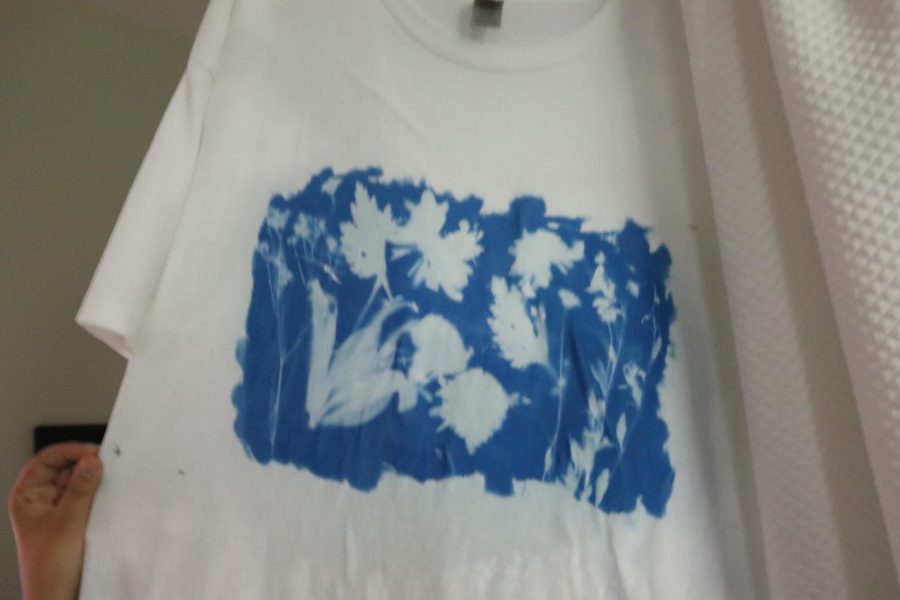
“It was kind of freeing,” Argast said. “I feel like a lot of art forms are very constricting and you have to think too much about all the things that you have to do, but we used natural materials like flowers and leaves, so it felt more spontaneous.”
Using natural materials is a common practice in Cyanotype and other sun printing methods. Sierra Mohr is a fiber artist based in Nevada City, California who specializes in eco printing, also known as botanical dying, a process similar to Cyanotype in which the natural colors and silhouettes of plant materials such as flowers, leaves, seeds, or bark are transferred onto fabric or paper.
“The first time I saw an eco-dyed item I knew immediately that I had to learn the process,” Mohr said. “I learned the basics and from there I dyed and dyed, experimented, purchased tutorials and books, and dyed some more.”
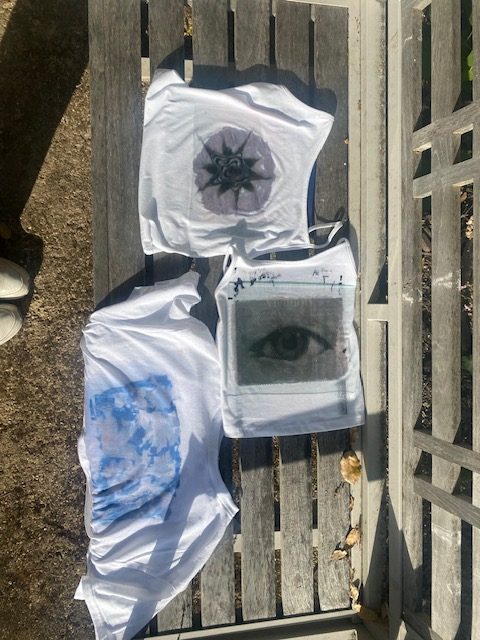
Mohr’s passion has continued to develop over the years, becoming her full-time career.
“At first I dyed scarves, then home accessories and repurposed clothing,” Mohr said. “Then I took it up a notch, creating one-of-a-kind garments, handbags and accessories.”
Although a fairly resistant art, there are certain conditions and elements that are able to hurt its appearance.
“The colors can be affected by many things, such as using various mordants, the time of the year the leaves were collected, and the weather conditions when collected,” Mohr said.
For example, a leaf collected in spring may produce an entirely different consistency and color than its summer counterpart.
“I love that the process cannot be completely controlled and that nature is providing the prints,” Mohr said. “The results are always exciting and to me feel like gifts from nature. Each piece is unique and one of a kind.”
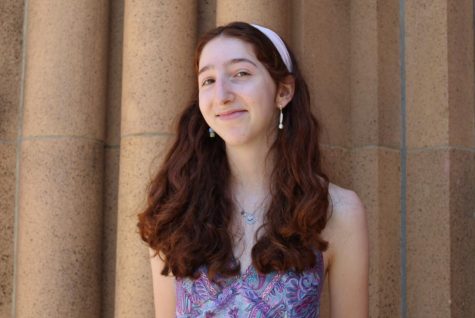
2022-2023 - Staff Writer
I joined C Mag because I love the magazine’s blend of art, culture, music and design! As an underclassmen, I always enjoyed...

2022-2023 Staff Writer
2023-2024 Online Editor-In-Chief
I joined C Magazine because I've always loved art, and wanted to incorporate that into the...






